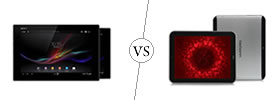Difference between Visa and MasterCard
Key difference: Visa and MasterCard are card processing companies. They are essentially the middle-men between the card holders and the retailers. The main difference between Visa and MasterCard is in the list of merchants that accept these cards. Most merchants and retailers, local and internationally, accept both Visa and MasterCard these days. Still, some may choose to accept only Visa, or only MasterCard, or some may not accept credit cards entirely.
 Credit cards and debit cards are small rectangular plastic cards issued by a financial institution, such as a bank or credit union. They can be used to make purchases at most stores, even over the phone and internet. They can also be used at an Automated Teller Machine (ATM) machine to withdraw money by using a Personal Identification Number (PIN) number, which is unique to each card holder. However, these cards usually have a much larger scope, i.e. they can be used at more locations than a traditional ATM card, which is usually limited to the bank’s ATMs and some other bank’s ATMs, which have a tie-up with the account holder’s bank.
Credit cards and debit cards are small rectangular plastic cards issued by a financial institution, such as a bank or credit union. They can be used to make purchases at most stores, even over the phone and internet. They can also be used at an Automated Teller Machine (ATM) machine to withdraw money by using a Personal Identification Number (PIN) number, which is unique to each card holder. However, these cards usually have a much larger scope, i.e. they can be used at more locations than a traditional ATM card, which is usually limited to the bank’s ATMs and some other bank’s ATMs, which have a tie-up with the account holder’s bank.
Credit cards are usually processed over Visa or MasterCard networks, which have a much larger national and even international scope. Visa and MasterCard are card processing companies. They are essentially the middle-men between the card holders and the retailers. However, they do not issue the credit or debit cards. Neither do they set the rates, terms, or benefits of the cards. These are set by the banks that issue the cards. They exist to set rules and standards for the way in which card transactions are accepted, authorized, and processed. They negotiate the setting up of payment systems with different banks and building societies around the globe.
As card processing companies, Visa and MasterCard are responsible for facilitating transactions between the banks that issue the cards and the merchants and service providers that accept them. They also verify the availability of funds in any fashion of account that been set up by an issuing bank or other financial institution. They also check for security and fraud, as well as offering systems for investigation and recompensation should fraud occur. Furthermore, their logos have become symbols of trust. They ensure that the retailer or merchant will receive the money that they are due from sales to the card holder. And for all these services, Visa and MasterCard are paid handsomely by the banks and credit card issuing institutions.
As Visa and MasterCard have little to do with the credit cards themselves and more to do with the service as facilitated between the merchants and the credit card issuing institutions, there isn’t actually much difference between the two. Both, Visa and MasterCard provide the same range of services to both the merchants and the banks. The differences between the cards are on the basis of interest rates, terms and conditions, or benefits of the cards, which are all, decided by the institution that has issued the card. Hence, a Citibank Visa credit card may be extremely similar to a Citibank MasterCard. However, a Citibank MasterCard may be extremely different from say the Barclays MasterCard, even though they are both MasterCard.

The main difference between Visa and MasterCard is in the list of merchants that accept these cards. Most merchants and retailers, local and internationally, accept both Visa and MasterCard these days. Still, some may choose to accept only Visa, or only MasterCard, or some may not accept credit cards entirely, this may be true of small retailers, especially those who may be situated away from the major urban populace.
Traditionally, it was considered that Visa was accepted more universally than MasterCard, however, that is not the case anymore. Now, both Visa and MasterCard claim that they are used as methods of payment at around 20 million merchant establishments in over 150 countries. While, Visa claims to have 1.6 billion cards issued, and that cardholders have access to about 1.2 million ATMs worldwide. In return, MasterCard claims that they process over 18 billion payments annually.
In terms of additionally security, Visa offers their ‘Verified by Visa’ scheme as protection when shopping online. MasterCard has its ‘SecureCode’ scheme which essentially works in a similar manner. Both these schemes are optional that adds extra security to purchases. They allow the card holder to set up a password or secret number, which then must be entered during every online transaction. This prohibits anybody without the password to use the card to shop online. At times, either Visa or MasterCard may also have some reward schemes in place. These are available for their respective card holders, and/or for some prospective new customers.
In addition, there are also some slight differences between how much Visa and MasterCard will charge credit card providers for foreign currency exchange fees. However, due to the direct competition these differences are minor.
Image Courtesy: juggle-images.com, baycel.org









Add new comment